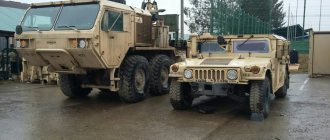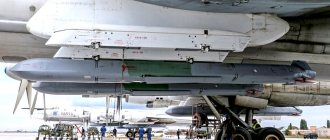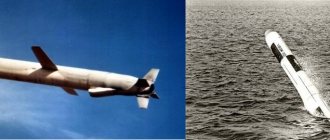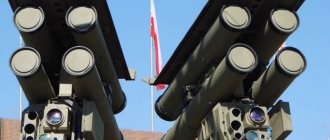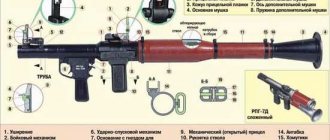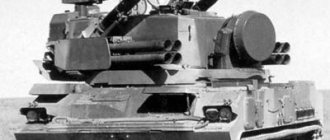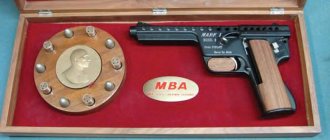Attack modes and speed
The complex has two attack modes. An attack from above is preferable, since almost all heavy equipment is least protected at the top. A direct attack allows the operator to hit the side projection of the target. A trained soldier is capable of firing three missiles in just a couple of minutes. Potentially, all three shots will be effective: a single soldier with a Javelin can easily destroy as many as three tanks - a tandem cumulative warhead is too tough for any armored vehicles existing today.
“Who are you without your hammer?”
The events that led to this battle in 2003 began after Turkey refused to provide its territory for a strike on Iraq from the north.
But is it necessary to fight? And the United States decided to send a group of comrades from the special forces - aka the Green Berets - to northern Iraq. “So that no one would guess,” they decided to name the operation modestly and tastefully: Viking Hammer. The goals of the operation were, to put it mildly, ambitious.
First, to pin down the Iraqi divisions in the north of the country so that they do not go to defend Baghdad. Secondly, occupy oil fields (one of the largest in the world) and oil refineries near the city of Kirkuk. Third, seize a factory producing toxic substances (oops). And, finally, do not give the Turks a reason to invade Iraqi Kurdistan - fortunately, the Kurds were allies of the United States and did not like the Iraqis, and the Turks did not like the Kurds (however, historically no one liked the Kurds at all).
“And then, on the ruins of the chapel...” Although no. This was not required of the Green Berets.
To fight in the desert, the special forces were equipped with GMV (Ground Mobility Vehicles), a special version of the Humvee. Standardly, these all-terrain vehicles were equipped with 12.7 mm machine guns or 40 mm grenade launchers, plus AT-4 anti-tank grenade launchers, “javelins” or “stingers” on every third vehicle. When fully loaded, the weight of each jeep easily exceeded 5.5 tons.
Supply on the battlefield with GRV (photo source)
And for complete happiness, the “berets” were given five-ton GRV (Ground Resupply Vehicles) trucks with removed cabs and added installations for machine guns. Now special forces could resupply supplies directly on the battlefield. Each group was assigned an aircraft controller.
On March 26, 2003, the fighters were dropped in northern Iraq. In total, over fifty teams landed. More than 60,000 Kurds came to the rescue, plus they hit the Iraqis with tomahawks.
Evgeny Bashin-Razumovsky Expert on historical issues
In addition to the 2nd and 3rd battalions of the 10th Special Forces Group, the Viking tactical group included units of the British SBS, a special forces group of the US Air Force, as well as a number of units of army paratroopers and the Marine Corps. Their task was to defeat the pro-Saddam group Ansar Al-Islam, after which the Kurdish formations would begin the fight against the Iraqis with the support of American special forces.
The total number of Kurdish forces at 60 thousand people is estimated taking into account all local units, including those who have never left their own villages. The combat core that took part in the operation numbered six to seven thousand people, and about 80 Kurdish militia fighters took part in the battle for the Debek Pass.
On April 6, two teams of “specialists” (a total of 26 “berets”, plus three air controllers and two reconnaissance sergeants who volunteered to be drivers) received a new task: to occupy the Debek Pass, where the highways to Mosul and Kirkuk met. 80-150 Peshmerga fighters, the Kurdish militia, arrived to provide support. The militia were well armed: up to DShK machine guns and 106-mm recoilless rifles on jeeps.
Balance of power
Previously, the Iraqi defense at the pass was bombed in several stages with B-52 - 454 kg JDAM bombs, which were guided by GPS. At 7:30 the Kurds went on the attack with the support of special forces machine guns. The trenches at the crossroads in the shape of the letter T (as viewed from the north) were occupied without any problems. An abandoned T-55 stood nearby. Captured Iraqis said that the intersection was held by a battalion with 12 T-55 tanks and 15 MTLB transporters, but after airstrikes it retreated to the south.
By 9:00 the Berets blew up the earthen rampart that was blocking the passage and began moving towards the southern highway. Ten minutes later, Staff Sergeant Jason Brown saw a truck with infantry and, while sitting, fired a Javelin at it. Almost half of the squad watched the launch with interest. Although the missile’s range was officially set at two kilometers, they were able to hit the truck from three kilometers. Soon they took out another car, and then the Iraqis began shelling. The special forces sensed trouble ahead. And I was not mistaken.
Launch of the Javelin during the battle (photo source)
Ukraine will use Javelins and Turkish drones against Donbass
Ukraine will arm every unit that enters the combat zone in Donbass with American Javelin anti-tank systems.
Commander-in-Chief of the Armed Forces of Ukraine Ruslan Khomchak stated this in an interview with the Army.Info agency, a PolitNavigator correspondent reports.
Subscribe to PolitNavigator news in TamTam, Yandex.Zen, Telegram, Facebook, Odnoklassniki, VKontakte, YouTube channel and Yandex.News
According to the military leader, over the past six years, Ukraine has received almost half a billion dollars in military assistance from the United States. This year, about 30 items, including anti-tank systems, are being transferred to the country.
“Currently, at the base of one of the brigades, which is completing preparations at the training ground for performing tasks as part of the Joint Forces Operation, the tactics of using Javelins are being actively developed. The skills of the crews of these ATGMs are being developed. I personally want to make sure that our warriors can effectively use these anti-tank systems.
We now have a significantly larger number of American ATGMs in stock. By the way, as well as the number of prepared calculations. How many are there? Secret. I will only say that in the future, each of the brigades that will enter the JFO area will be reinforced with Javelins.
In addition, when preparing this brigade for the next rotation, we will also practice the use of Bayraktar drones with combat engagement of a target,” Khomchak said.
Earlier, the ex-ambassador of Ukraine to the United States, Valery Chaly, said that American Javelin anti-tank missile systems will now be able to be used in the Donbass ; previously, the American side did not allow their use in the combat zone.
“Javelin is a weapon that, of course, has proven itself well in Iraq for the American army. But, nevertheless, equipment, even Soviet, is able to withstand a hit from the Javelin system if used correctly.
We hope that now no one in the territory adjacent to the LDPR, having a sound mind, will take offensive actions, because this will end with the militia becoming embittered and taking Odessa, Mariupol and so on,” said an expert of the All-Russian movement “Strong Russia” for International Affairs, Vice-President of the International Committee for the Defense of Human Rights Alexander Ionov.
He warned Kyiv against provocations that “would entail a chain of very serious and dangerous consequences for the Ukrainian leadership, including those of a military nature.”
If you find an error, please select a piece of text and press Ctrl+Enter.
Minuses
Under conditions of limited visibility (fog, rain, dust and other vicissitudes of nature), the Javelin day sight becomes practically useless. The missile must follow a certain trajectory, and this makes it impossible to use the complex in forests, mountains and in urban battles. The operator has to get used to considerable weight; the entire system weighs about 22 kilograms. In general, the complex is quite cumbersome, you can’t run through the forest with it. Besides, few dare to carry a gun that costs a hundred thousand dollars. There are cases when a fighter lost his life, not daring to leave behind an expensive weapon.
"Javelin": myths, facts and "experts"
So, the supply of Javelins to Ukraine is becoming a reality, while it seems that no one considers it necessary to hide Kyiv’s revanchist plans. If the plans are implemented, this will be the first time since Afghanistan when our army (and the Armed Forces of Novorossiya, let’s be honest, its branch) will encounter high-tech weapons made in America.
In Georgia, at best, it was about modernized Soviet and Western small arms and electronic warfare systems; in Syria, the technological pinnacle was the not-so-new Tou anti-tank missiles. At the same time, in Afghanistan, the Stingers, having inflicted formally limited losses, forced Soviet aviation to adjust their tactics in a very unpleasant direction, reducing the effectiveness of air support. At the same time, it is extremely likely that the VSN will face a serious and massively underestimated problem.
I would like to note that the stream of consciousness on the topic “The LDPR Armed Forces are not going to attack, so ATGMs do not threaten them in any way”, in fact, is nothing more than a thoughtless repetition of Kurt Volker’s . Firstly, the absence of massive shelling of residential buildings is explained not by Kyiv’s pacifism, but by the prospect of Debaltsev 2.0. Secondly, Washington’s rhetoric on the purely defensive nature of anti-tank systems has nothing to do with reality. To begin with, anti-tank missiles can be - and are - used offensively. Further, an effective offensive is impossible without effective defense against enemy counterattacks and flank attacks (it was the latter that ensured the Ukrainian Armed Forces’ regular existence in pockets). And, conversely, effective defense is impossible without effective counterattacks, which is important for the LDPR.
At the same time, the 210 Javelin missiles scheduled for delivery are “equivalent” to approximately 2/5 of the tanks formally available to the LDPR. Meanwhile, the payroll, as usual, differs very significantly from the actual combat-ready one. Naturally, the effectiveness of the ATGM will be far from 100%, but the unpleasant problem is that it will be much closer to this figure than in the case of conventional second-generation anti-tank missiles; the number of missiles expended during training is also likely to be smaller. At the same time, Washington will almost inevitably supply additional weapons after the start of hostilities.
Hopes for the omnipotence of the “Ukrainian warrant officers” are obviously practically groundless. The same applies to the low qualifications of the “users”. The United States practically cannot fail to take into account the situation that regularly arises when supplying military aid to Ukraine (the seizure of an unused counter-battery radar, the breakdown of the other two, the sale of UAVs). This time, the Ukrainian Armed Forces will likely face much tighter control. At the same time, it is by no means excluded that the United States is using PMCs - let me remind you that in the case of the Croatian operation against the Serbian Krajina, the private military was in full force.
Now let's see what the Javelin is. So, we have before us a third generation ATGM and its differences from its predecessors are more than significant.
The only “automation” in the first generation ATGM was a gyroscope; otherwise, guidance was completely manual. Naturally, this imposed strict restrictions on the range and speed of the rocket (the Malyutka’s speed was 120 m/s).
The second generation is “semi-automatic” ATGMs. The rocket is kept on a given “course” automatically. The most common option: using an optical-mechanical coordinator - a rather simple device that tracks the position of the missile tracer. The operator “only” has to hold the mark on the target. The simplest way to transmit commands from the control system and the operator is through wires. Its range and speed limitations are understandable. The alternative—the radio command version—is vulnerable to electronic warfare.
As you might guess, tracer-oriented control systems are simply “clogged” with interference. So, if something comes into the coordinator’s field of view that is recognized as a tracer and exceeds it in radiation strength, the control system begins to try to control it with a somewhat obvious result. They try to combat such control interceptions and passive interference by modulating the radiation of the tracer, but for obvious reasons this method is not very effective. If you think that the tracer is clearly “visible” in bad weather conditions, dust and smoke, then you are mistaken.
A more complex (and expensive) approach to guidance compared to the standard one is the use of a laser. In this version, the missile, equipped with its own laser radiation receiver, flies in its fairly wide cone and adjusts its position relative to it, or is guided by a laser “mark” on the target. The disadvantages are obvious - the emitting laser, firstly, if there are sensors, is relatively easy to detect and can serve as a means of targeting itself, and secondly, it “warns” the target. At the same time, scattered laser radiation is easily blocked by smoke and dust, and its distribution depends on weather conditions.
Russian Foreign Ministry: We will take adequate retaliatory measures against Britain
At the same time, the semi-automatic control system in its classic version has three difficult or fatal drawbacks. Firstly, “just” keeping the mark on a moving and maneuvering target - in practice means a huge number of misses. Secondly, the ATGM unmasks the operator (especially important in the era of tank thermal imagers) and at the same time, with semi-automatic guidance, chains him to the spot. Malyutok operators being killed before they even managed to bring the missile to the target were commonplace; the life of Tou operators in Syria is also not as easy and carefree as it seems. In other words, guidance may be disrupted by shelling, the operator may be killed before the guidance is completed, or may not have time to take cover. Thirdly, a full-fledged attack from above is impossible.
This is a theory. In practice, the thought that is constantly in full swing in the domestic military-industrial complex has given rise to a long series of “cheap and effective” solutions. The most common ATGM - "Metis" - is a weapon that has no analogues in the world. To make the rocket as cheap and widespread as possible, ... the gyroscope was removed from it; as a result, roll stabilization is ensured by tracking the position of the tracer on the stabilizer with already known efficiency. The efficiency of the steering gear depends on the speed that is minimal at the target... along with the efficiency of the rudders themselves. Naturally, as a result, the “mass” ATGM has far from massive requirements for operators, which in practice are much higher than, for example, “TOU”. A real Soviet engineer, as you know, knew how to not only ruin the life of a customer, but ruin it in such a way as to cause him a lasting shock.
Systems that ensure guidance failure of second-generation ATGMs have been developed quite a long time ago. The domestic “Shtora” consists of two IR spotlights that act as false tracers for ATGM coordinators, laser radiation sensors and smoke grenades. Sensors detect radiation exposure and determine its direction. Next, a smoke screen is placed in the path of the laser radiation. In this case, the weapon, upon the operator’s command, can be automatically aimed at the source of laser radiation. Naturally, the scheme works not only against ATGMs.
The American MUSS (structurally made in the form of a single unit mounted on an infantry fighting vehicle or a tank turret) in addition to this ensures detection of the plume of the actual approaching missile through the use of ultraviolet radiation sensors. In the domestic case, this option is available in the Afghanit installed on the Armata.
Troubles in Hong Kong, USA, Ukraine and Russia. Comparative analysis
What is the fundamental difference between the third generation ATGM? First of all, it has homing. In this case, we are not talking about trivial pointing at a heat source, but about pointing at a thermal imaging “picture”, also known as the “image of the target”, “remembered” by the rocket before launch. What exactly the rocket needs to “remember” is decided by the operator. Naturally, the algorithm allows for changes in the “image” within certain limits, which are inevitable when maneuvering the target and changing the angle.
Thermal imaging homing “to the image”, contrary to the absurd but widespread myth, provides an order of magnitude greater noise immunity of third-generation missiles compared to second-generation missiles: if in the latter case it is enough for jammers to imitate the tracer, then in the case of “Javellin” and Co. they will have to either imitate... tank, and not an abstract one, or radically distort the “image” of the tank, and in a narrow interval between the launch and delivery of the warhead to the target. "Spot" heat traps are ineffective against Javelin.
At the same time, the thermal imager of the rocket, just like that of the launcher, “sees” through smoke, fog, etc., although, naturally, somewhat worse than in a clear atmosphere.
By programming the rocket to strike from above at some distance behind the “image”, from most angles it is possible to ensure a strike on the roof.
In the case of the Javelin, this option is provided. The main variant of the ATGM trajectory is to rise to 160 m (when firing at 2 km), fly at this altitude and then dive at an angle of approximately 45 degrees while simultaneously scanning the target. Another option involves a “slide” (70 m when shooting at 2 km) at the beginning of the flight, followed by a gentle dive to the target.
At the same time, a strike from above is especially dangerous for domestic tanks, as it can hit the ammunition rack on the floor of the fighting compartment.
The “elevated” version, with homing, has another obvious option - the ATGM “sees” the target even if it has gone beyond the operator’s visibility and “sees” it over possible obstacles. At the same time, it almost deprives the tanker of the opportunity to see the approaching Javelin.
All this has a “certified” range of 2.5 km, armor penetration of 600 mm, a tandem warhead that overcomes dynamic protection, and when assembled it weighs 22.5 kg together with the missile, i.e. the same as a light ATGM.
The Karachay-Cherkess Republic adopted a law on children of war
It should be borne in mind that 2.5 km is far from the maximum range of the complex’s “fire.” This is the technical specification and the range of guaranteed destruction. In practice, both the missile’s energy and the sighting system (a 64 by 64 matrix is not a launcher, but a warhead) make it possible to shoot much further. The record shot in combat conditions is 3700 m, the range result in 2013 with unmodified missiles is 4.75 km. For comparison: domestic developers indicate a range of 2.5 km for the Metis-M with its “mighty” sighting system.
Homing, as such, allows, firstly, to achieve much greater accuracy when shooting at a moving target. The battle on the Debaka Pass, where Javelins fired at moving targets at a range of 2200 m and at least twice at a range radically exceeding the “official” one, demonstrated 14 hits from 19 launches. Secondly, homing allows the operator to take cover or change position immediately after launch. Thirdly, it excludes “warning” of the target by laser and other irradiation. A laser rangefinder is available on new versions of the Javelin, but its use is purely optional. Fourthly, it increases the maneuverability of the complex: the operator does not need to keep the mark on the target, and shooting not from a tripod, but “at a grenade launcher” (mainly while sitting or from a rest) is the norm for the Javelin. Other options were mentioned above.
In other words, we have before us a complex that is superior in maneuverability to any light ATGM and at the same time has anti-tank capabilities comparable to heavy man-portable ATGMs of the Kornet class, even formally.
The shortcomings of the complex are carefully and lovingly relayed by the domestic sofa community, but in practice they have a rather specific subtext. This is either outright propaganda, or the result of the intensive work of a “double-damaged phone.” The Americans write instructions, quite conscientiously indicating obvious restrictions, restrictions that work in very specific conditions, and something from the series “we would like such restrictions”; in turn, the sofa public is firmly convinced that they are exclusively engaged in advertising their “miracle weapon”. The result is appropriate. Let's see how things stand in reality.
The cost of the Javelin is, naturally, very impressive, but in practice it is only twice as high as that of advanced second-generation ATGMs. Contracts for the supply of Kornet show the cost of the missile at $40 thousand, the rather archaic Tou-2 - $59 thousand.
German counterintelligence called Russia and China “destabilizing” countries
The second most popular object of mythologization is the need to cool the thermal imagers of the rocket and launcher. For the PU thermal imager, the cooling duration is 2.5-3.5 minutes, but in this case we are talking about very extreme conditions (“Iraqi” heat). However, its use, of course, is not mandatory. The warhead cools down in 10 seconds. a special replaceable cooling unit with a different type of device (gas cylinder); The duration of the last one is 4 minutes.
Further, “at dawn and dusk, when the background temperature changes rapidly, conditions may exist for about 1 hour when it is impossible to capture the target.” Indeed, twice a day the temperature of the tank coincides with the temperature of the underlying surface. However, this requires that it be a “cold” tank, without any signs of activity.
Naturally, there are limitations associated with the need to provide the missile with the ability to move upward when firing.
It is worth noting that the progress of thermal imaging technology over the past two decades has been enormous, and already ten years ago there were uncooled matrices with better performance than the Javelin. As far as we know, work on “modernizing” the ATGM is nearing completion.
However, let's return to the current Ukrainian situation. Perhaps the most striking thing about it is the reaction of domestic “experts”.
Victor Murakhovsky : “Honestly speaking, in my opinion, everyone is already tired of them both in the information and expert communities... This does not seriously affect the aspect ratio.” “Domestic portable ATGMs, as a rule, have a very complex and expensive launcher, but at the same time they have simple and cheap ammunition. With the Javelin it’s the other way around: one missile of this ATGM costs almost as much as our self-propelled ATGM.”
Javellin costs $86 thousand. Self-propelled ATGM of the Chrysanthemum class costs several million. By “simple and cheap ammunition” we obviously mean “Metis”.
“The simplest means to deprive the Javelin homing head of the ability to correctly point the missile at the target is to install specialized aerosol curtains either by external means or by smoke exhaust devices installed on the armored vehicle itself. Even relatively old smoke grenades from the electro-optical active protection complex dating back to Soviet times can significantly block the targeting ability of the Javelin.
Calls for the alienation of Russian territories will be equated with extremism
Let me remind you that the Shtora fires smoke grenades in response to laser irradiation, and the laser rangefinder on the Javelin is optional. Obviously, Mr. Murakhovsky suggests that tankers detect the missile with the naked eye. Then form a smoke screen “10 m high at a distance of 50-80 m” in the direction of the installation and hope that the Javelin attacking from a height of 160 m will notice it. At the same time, the smoke from the Curtain is not actually any effective protection against the Javelin thermal imager. This is exactly why specialized smoke grenades are being developed in both Russia and the USA. Let me remind you that the infrared illumination of the “Curtains” is also useless.
Meanwhile, Mr. Murakhovsky, along with his ideas about ATGMs, simply by virtue of his position influences the decisions of the Military-Industrial Commission and, by a strange coincidence, we still do not have a third generation ATGM.
Military observer Ilya Kramnik : “The short flight range of the missile (up to 2 thousand m) imposes its limitations.” “Guiding this complex is a rather labor-intensive algorithmic process, requiring remarkable composure from the calculation and at the same time speed in performing a number of sequential operations, negligence in any of which can lead to failure of target acquisition and missile miss.”
In reality, targeting the Javelin is as simplified as possible. A likely labor-intensive algorithmic process is placing the cooling unit on the unit.
In other words, Javelins are not serious. “New heavy sniper rifles can pose a serious problem here and now - however, the Ukrainian Armed Forces already have such weapons. Ukrainian units are conducting an active sniper hunt on the contact line, including using foreign assistance, and the activation of snipers could lead to an escalation of the conflict as a whole.”
However, let’s leave the “experts” alone and summarize. In reality, the optical-electronic suppression systems in service (“Shtora”) are almost completely useless in confrontation with an enemy armed with third-generation ATGMs. The same applies to “current” active protection systems that do not protect the upper hemisphere. Perhaps the Afghanit, intended for installation on the Armata platform, can effectively combat this threat, but it is guaranteed not to be in the Donbass. Other means are palliative: for example, the “Cape” reduces IR radiation by only half, anti-sniper systems will only lead to the use of specialized filters, which, of course, are available on the optics of “Javelina” and Co.
At the same time, we are not only talking about the problems of the VSN. The same situation applies to almost all armored vehicles of the Russian army. We have neither third-generation ATGMs nor adequate and widespread measures of protection against them. At the same time, even archaic ATGMs have become the main threat to armored vehicles.
Evgeniy Pozhidaev
Kyiv is going to deploy American Javelin ATGMs in Donbass
Image source: topwar.ru
Recently, the United States delivered a batch of Javelin anti-tank systems to Ukraine. Kyiv is going to place new weapons in the Donbass, arming them with brigades operating in areas where the so-called. "anti-terrorist operation".
As you know, Ukraine received the first batch of Javelins back in 2018, but there was a delay with the second batch, which cost US President Donald Trump dearly. However, in the end, American anti-tank missile systems ended up at the disposal of the Ukrainian army, and this time the United States allowed the use of Javelins not only in the event of “direct Russian aggression”, but also in conventional military operations in the Donbass. CNN's Ryan Brown tweeted this.
US officials told CNN that there are no geographic restrictions on where Ukraine can deploy US-supplied Javelin anti-tank missiles.
- the journalist emphasized.
It is worth noting that the United States interprets the concept of a “defensive act” quite freely, within the framework of which Ukraine is allowed to use American anti-tank systems. For example, airstrikes that were carried out against the positions of al-Shabab militants in Somalia were also considered by the US military department as “defensive acts”, since they were carried out in response to the actions of Somali militants against government forces of Somalia and African Union states friendly to the United States. .
There is no doubt that in Ukraine we will witness the same situation: if necessary, even the offensive actions of the Ukrainian military in the Pentagon will be characterized as defense, and therefore the use of Javelins will be allowed. Thus, “javelins” can be used as a response to any actions of the armed forces of the Donetsk or Lugansk republics.
Image source: topwar.ru
In any case, the appearance of American anti-tank systems in Ukraine significantly increases the firepower of Ukrainian Armed Forces units located on the front line. The author of the American publication The Drive, Joseph Trevithick, emphasizes that military units can use these anti-tank systems in one of two modes: one launches a missile directly at the target, and the other performs a maneuver. Trevithick calls the latter method particularly effective in hitting the upper part of tanks, which is the most vulnerable even with an active protection system.
However, the exact tasks that the Javelin ATGM will have to solve in the Donbass are still unknown. But Colonel General Ruslan Khomchak claims that during the next rotation of Ukrainian units they will be equipped with javelins. Currently, one of the army brigades is undergoing training before deployment to the Donbass, and training in the use of “javelins” in a combat situation is considered one of the most important areas of training.
Naturally, the Ukrainian command claims the need to use American anti-tank systems, since Russia allegedly deployed impressive armored forces in the Donbass and without new anti-tank missile systems it is not possible to resist them. Stories about Russian aggression in the Donbass serve to justify further supplies of American weapons. This line is ultimately beneficial to both the Ukrainian Ministry of Defense and the American military department.
The Chief of the Missile Forces and Artillery of the Russian Armed Forces, Lieutenant General Mikhail Matveevsky, told the media about the upcoming development of a new generation anti-tank missile system.
This will be a self-propelled complex in which the “fire and forget” principle will be implemented. That is, the task of pointing the missile at the target will be solved not by the crew, but by the missile’s automation. “The development of anti-tank systems,” Matveevsky clarified, “is moving in the direction of increasing combat performance, missile immunity, automating the process of controlling anti-tank units and increasing the power of combat units.”
It would seem that the situation in the country with this type of weapon is quite sad. There are already third-generation ATGMs in the world, the main characteristic of which is precisely the implementation of the “fire and forget” principle. That is, the third generation ATGM missile has a homing head (GOS) operating in the infrared range. 20 years ago, the American FGM-148 Javelin complex was put into service. Later, the Israeli Spike family of ATGMs appeared, which used various methods of targeting the target: by wire, radio command, laser beam and using an IR seeker. The third-generation anti-tank systems also include the Indian Nag, which has almost doubled the range of the American design.
Russia does not have a third generation complex. The most “advanced” domestic ATGM is “Cornet”, created by the Tula Instrument Design Bureau. He is classified as generation 2+
Why did this happen?
FGM-148 or “Jevlin” is the first serial American man-portable system (ATGM) of the 3rd generation. It is designed to destroy protected objects (bunkers, long-term firing points), low-speed air targets (unmanned reconnaissance aircraft and helicopters), but primarily armored vehicles. The development of this ATGM has been carried out in the USA since 1986 by the Javelin Joint Venture concern. The FGM-148 was created to replace the M47 Dragon, which has been in service with the US Army since 1975. It was adopted by the US Army in 1996. Widely used during the fighting in Iraq.
Compared to previous generations of anti-tank missile weapons, third-generation systems have not only advantages, but also very serious disadvantages. It is no coincidence that in the family of Israeli Spike ATGMs, along with the seeker, they use an archaic wire guidance system.
The main advantage of the “three-pointers” is that after launching a rocket, you can change position without waiting for a return rocket or projectile to arrive. It is also generally accepted that they have higher shooting accuracy. However, this is a subjective thing, it all depends on the qualifications and experience of the second generation ATGM gunner. If we talk specifically about the American “Jevelin” complex, it has two modes for selecting the missile trajectory. In a straight line, as well as attacking the tank from above into the part least protected by armor.
There are more disadvantages. The operator must ensure that the seeker has locked onto the target. And only after that make a shot. However, the range of the thermal seeker is significantly less than that of television, thermal imaging, optical and radar channels for detecting a target and pointing a missile at it, which are used in second-generation ATGMs. Thus, the maximum firing range of the American Javelin ATGM is 2.5 km. At Kornet - 5.5 km. In the Kornet-D modification it has been increased to 10 km. The difference is noticeable.
The difference in cost is even greater. The portable version of the Javelin, without the landing gear, costs more than $200,000. "Cornet" is 10 times cheaper.
And one more drawback. Missiles with an infrared seeker cannot be used against thermally non-contrasting targets, that is, pillboxes and other engineering structures. Kornet missiles, which are guided by a laser beam, are much more versatile in this regard.
Before launching the rocket, it is necessary to cool the seeker with liquefied gas for 20 to 30 seconds. This is also a significant drawback.
Based on this, a completely obvious conclusion arises: the promising ATGM, the creation of which was announced by Lieutenant General Mikhail Matveevsky, must combine the advantages of both the third generation and the second. That is, the launcher must be able to fire missiles of various types.
Consequently, the achievements of the Tula instrument design bureau cannot be abandoned; it is necessary to develop them.
For a long time now, almost all ATGMs (anti-tank guided missiles) existing in the world have been able to overcome dynamic armor protection. When approaching the tank at a distance of several centimeters, the missile is met by the explosion of one of the dynamic protection cells located on top of the armor. In connection with this, ATGMs have a tandem cumulative warhead - the first charge disables the dynamic protection cell, the second penetrates the armor.
However, the Kornet, unlike the Dzhevelin, is also capable of overcoming the active protection of the tank, which is the automatic shooting of incoming ammunition with a grenade or other means. To achieve this, the Russian ATGM has the ability to launch missiles in pairs, which are controlled by a single laser beam. In this case, the first missile penetrates the active defense, “dying” in the process, and the second rushes towards the tank armor. In the “Jevelin” ATGM, such firing is impossible even theoretically, since the second missile is not able to “see” the tank due to the first.
The fight against anti-tank systems with active protection was done significantly ahead of its time, since now only two tanks in the world have active protection - our T-14 Armata and the Israeli Merkava.
At the same time, Kornet’s competitors on the arms market fiercely criticize it. However, for the latest development of the Tula Design Bureau, a queue of people is lining up to purchase an effective and inexpensive means of combating enemy tanks.
So FGM-148 or “Jevlin”
This complex has the following advantages:
— The missile can be aimed in bad weather conditions, increased smoke in the area and at night. This is a huge advantage over similar 2nd generation systems that are not equipped with a thermal sight. — The missile is aimed without actively illuminating the target, which does not unmask the missile launch site and does not provoke the activation of smoke screen systems on armored vehicles. — As a rule, the missile hits armored vehicles in the least protected upper part. Due to this, the residual cumulative jet has a high destructive power even after penetrating armor. “The missile is absolutely insensitive to the active protection systems existing today, which do not control the upper part of the armored vehicle. — The missile does not respond to optical-electronic suppression means, since the guidance system does not perceive the modulated signal, since it is aimed at a source of infrared radiation in the far part of the spectrum (engine, exhaust system).
And disadvantages:
— The ATGM can hit targets only in the line of sight area. And this casts doubt on its combat effectiveness at a distance of more than 1 kilometer. — It is extremely irrational to use the complex for shooting at a distance of up to 0.5 kilometers, since much cheaper and lighter hand grenade launchers have proven themselves well at such distances. However, adjusted for the fact that hand grenade launchers can only effectively destroy targets with light armor. — The shooter cannot influence the flight of the rocket after launch. And when the target has a temperature that differs little from the temperature of the relief features, for example, in a desert area, then the missile may lose its target. - High price. The cost of the launcher is approximately 125 thousand dollars, and the rocket is about 80 thousand dollars. — Before launching the missile, it is necessary to cool the homing head, which together takes about 1 minute to acquire a target. — Weapons experts from different countries note the low effectiveness of such systems, since a missile hitting a tank’s turret does not ensure that it is completely disabled. — And lastly, due to its complex trajectory, the Javelin cannot be used in urban environments or in wooded areas.
ATGM "Kornet-E"
Disadvantages of the complex:
— The significant weight of the launcher and missile in the TPK is about 50 kilograms. — The ATGM is aimed at the target using a laser beam, which unmasks the installation’s position. — The installation calculation consists of two people.
Advantages:
— Relatively low cost of the rocket and launcher - about 30 thousand US dollars. — It is possible to adjust the flight on the march. — Confidently hitting targets at ranges up to 5.5 kilometers. — High armor penetration - up to 1200 millimeters of homogeneous armor, which allows you to hit any of the tanks existing today.
https://masterok.livejournal.com
Source - https://masterok.livejournal.com/3235773.html.
- 100
- Similar news:
- Military acceptance. "Assault Underwater"
- The Russian Federation is creating warheads with a lethal effect based on new physical principles
Fire and forget
A huge advantage of the Javelin is the fire-and-forget system. The operator does not need to expose himself to the enemy's retaliatory strike by adjusting the missile's flight. Press the trigger and you can quickly hide in cover. The infrared guidance system that each missile is equipped with allows it to independently find its target.

